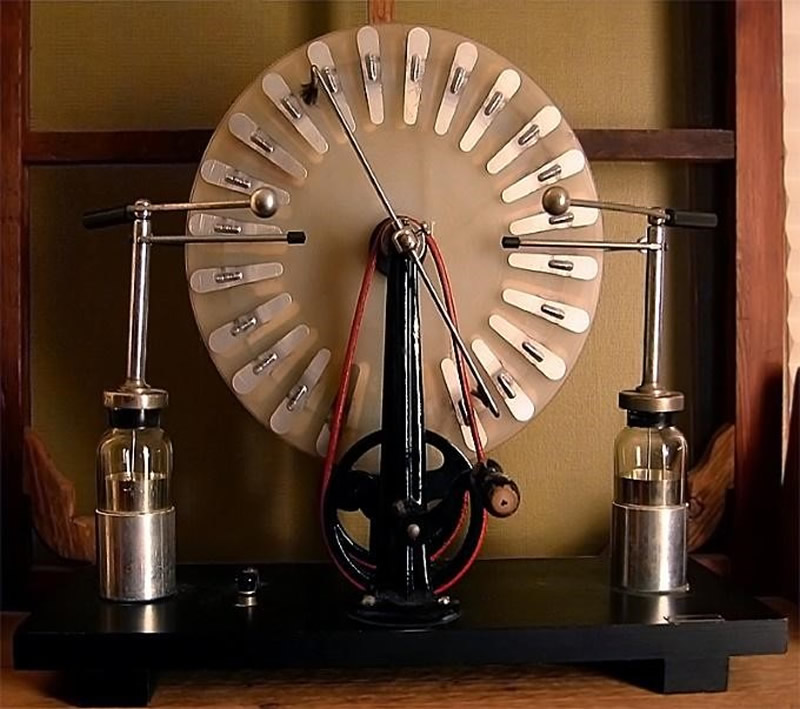
The electrostatic machine, invented in 1883 by James Wimshurst, has the function of separating electric charges and creating high voltages, in order to carry out electrostatic experiments.
INSIGHTS
Thanks to this machine, we were able to carry out important theoretical studies on electricity. Furthermore, since it is also able to produce electricity comparable to that of lightning, it was often used also for making public performances by creating spectacular "miniature lightning".
This electrostatic machine is composed of two insulating ebonite disks, which rotate in opposite directions, on which thin tin plates are applied. Two rods, located respectively in the front and rear of the machine, have small metal combs on the ends, alternating with brushes and discharge electrodes. Each metal foil has a charge induced by the foil of opposite sign on the other disc of the pair, so that both positive and negative charges are collected separately from the combs. In dry weather they can produce discharges of up to 100kV.
In some models the charges are collected in two Leyden jars. The Leyden jar is one of the oldest electric capacitors. It consists of a metal-coated glass container, the inside of which is connected to an electrode of an electrostatic generator.
Electrostatic machines are basically divided into two categories according to their method of operation: rubbing machines (which accumulate charged electrodes produced on two electrodes) and induction machines (which exploit the phenomenon of electrostatic induction).
The electrostatic machine introduced by the Wimshurst was the most powerful high voltage generator of the nineteenth century and the most used in laboratories in those years. It was also the first to be used to give energy to X-rays. It was brought to Italy in the early twentieth century by Carlo Molinelli. The last renovation of the machine owned by the Politecnico di Milano was made in 1997 by CESA. In 1954 it was included in the SLEO inventory of the Institute of Industrial Electrotechnics.
Technical Data Sheet
Inventor: James Wimshurst
Builder: Carlo Molinelli
Period: Early twentieth century
Dimensions: 840 x 420 x 800
Material: ebonite, wood, nickel-plated brass, copper, aluminum






